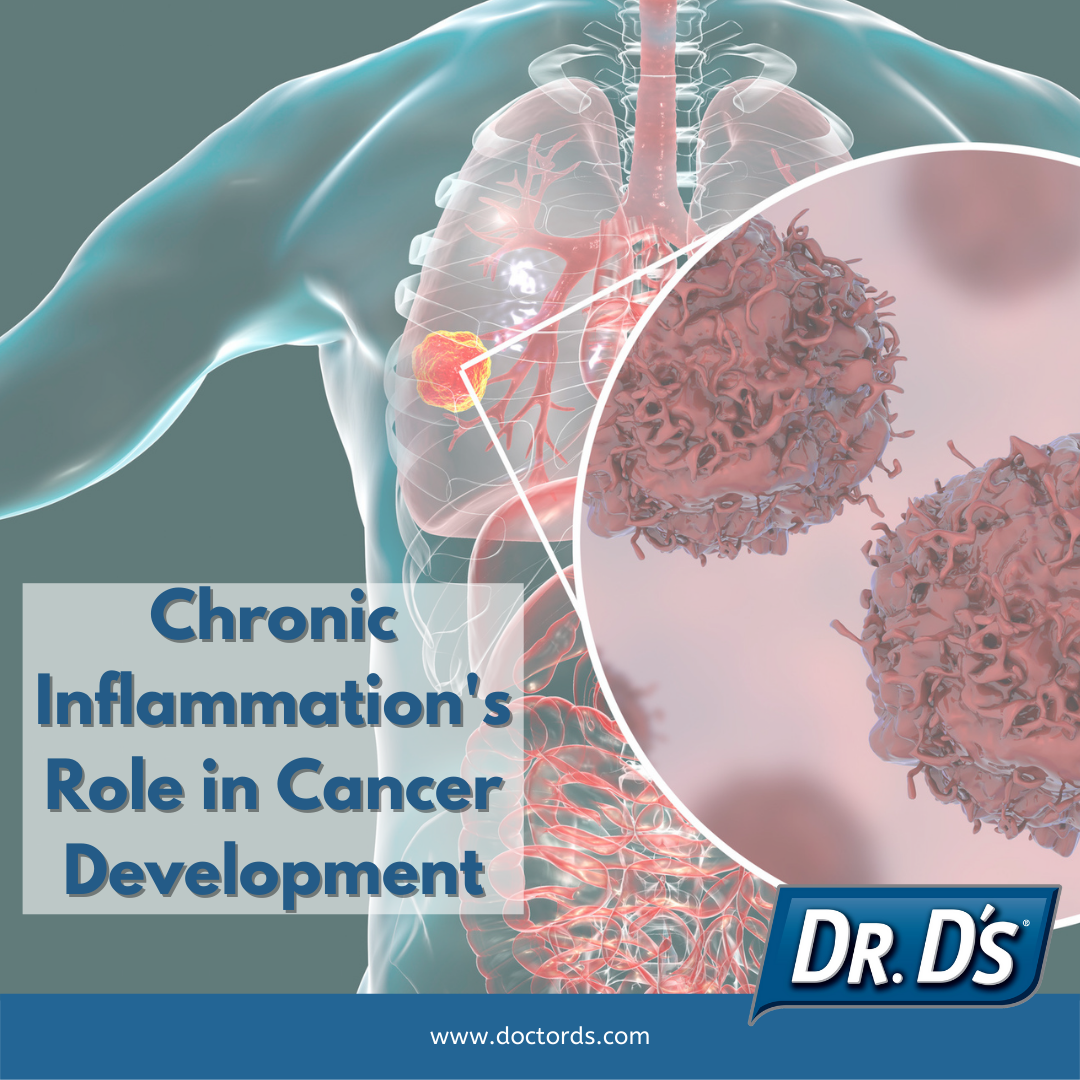
Chronic Inflammation's Role in Cancer Development
Share
Unfortunately, these days it is hard to come across a person who hasn't been touched by cancer either personally or through a close contact. There is now strong scientific evidence linking chronic inflammation to chronic disease, including cancer.
You might be surprised to hear that genetics play a small role in all cancers, and that the significant factor in most cancers is actually lifestyle choices/habits/environmental factors which lead to inflammation. Let us take a moment to explain inflammation. Inflammation is the immune system’s normal response to injury, toxins or infection. This short-term, or acute, inflammation is beneficial when it is under control, however, inflammation that persists longer is known as chronic inflammation. What we are exposed to in our modern lifestyle and our choices… such as smoking, high intake of processed foods, high stress, and environmental pollutants actually increase the systemic inflammation in our bodies as those are all sources of toxins that our immune system continually tries to fight off. Chronic, persistent inflammation causes tissue destruction and scarring, reshaping of healthy or normal tissue, and changes in gene expression, causing cells to undergo transformation and rapid growth. This abnormal and uncontrolled proliferation of maladaptive or inappropriate cells in a tissue, known as dysplasia, is a classic precursor to cancer.
There have been countless studies confirming that turmeric has anti-cancerous properties. In fact, cancer rates are lowest in countries that have the highest dietary intake of turmeric among the population. For example, the prevalence of some of the most common cancers (lung, breast, prostate and colon) are as much as 10 times lower in India, where there is a high turmeric dietary intake, than in the US, where there is a relatively low turmeric dietary intake among the population. Turmeric prevents this unhealthy inflammatory cascade and may therefore cease tumor formation, meaning that it stops the transformation from a healthy cell into a cancer cell, like in the case of HPV and cervical cancer. It is commonly accepted that some strains of HPV cause cervical cancer by instigating abnormal changes to normal cervical cells. Turmeric has been found to prevent precancerous changes in cervical cells after being infected by the HPV virus. Turmeric also inhibits the activation of cancer-causing genes. It inhibits the proliferation (or spread) of cancer cells. It also prevents the polyps, or growths, that lead to cancer. For example, turmeric has been found to delay the onset of colon cancer by preventing the formation of polyps on the intestinal lining of people living with familial adenomatous polyposis, a genetic condition that causes the extra tissue growth that precedes colon cancer. Turmeric also blocks angiogenesis, or the formation of new blood vessels, to a tumor, thereby cutting off its nutrient supply and suffocating tumor growth. Lastly, turmeric has been shown to help in the efficacy of chemotherapy and to reduce side effects for patients undergoing treatment for breast, thyroid, liver, lung, prostate and skin cancers
Evidence points strongly towards turmeric’s benefits in terms of slowing down, delaying or preventing cancer cells from forming in the first place. Therefore, it is important to speak about turmeric and cancer in the context of PREVENTION. A full-spectrum turmeric supplement should be considered as a daily part of a healthy lifestyle to give your body the best chance at combating future disease such as cancer.
SOURCES:
THE POWER OF TURMERIC: A HEALING AND PREVENTATIVE GUIDE, DR. FABIO DI STEFANO, PUBLISHER PRODUCTION SOLUTIONS, 2018
PUBLIC HEALTH AGENCY OF CANADA, STATISTICS CANADA, CANADIAN CANCER SOCIETY, & PROVINCIAL/TERRITORIAL CANCER REGISTRIES (2019). RELEASE NOTICE - CANADIAN CANCER STATISTICS 2019. HEALTH PROMOTION AND CHRONIC DISEASE PREVENTION IN CANADA : RESEARCH, POLICY AND PRACTICE, 39(8-9), 255.
HERMAN, J & ROSELLI, C. CURCUMIN DOWN-REGULATES NEUROPILIN-1, SEMAPHORIN 3A, CCL2 AND CCR2 MRNA EXPRESSION IN PC-3 CELLS. AACR ANNUAL MEETING. 68 (9). APR 12-16, 2008.
GIORDANO, A., & TOMMONARO, G. (2019). CURCUMIN AND CANCER. NUTRIENTS, 11(10), 2376.
*THE CONTENT IN THESE BLOGS IS STRICTLY EDUCATIONAL AND NOT INTENDED TO BE A SUBSTITUTE FOR PROFESSIONAL MEDICAL ADVICE, DIAGNOSIS, OR TREATMENT. ALWAYS SEEK THE ADVICE OF YOUR PHYSICIAN OR OTHER QUALIFIED HEALTHCARE PROVIDER WITH ANY QUESTIONS YOU MAY HAVE REGARDING A MEDICAL CONDITION OR YOUR GENERAL HEALTH. ALWAYS THOROUGHLY READ AND FOLLOW INSTRUCTIONS ON THE LABELS OF YOUR SUPPLEMENTS AND/OR MEDICATIONS. NOTE THAT THE CONTENT IN THESE BLOGS MAY BECOME OUTDATED AS NEWER RESEARCH IS PUBLISHED.